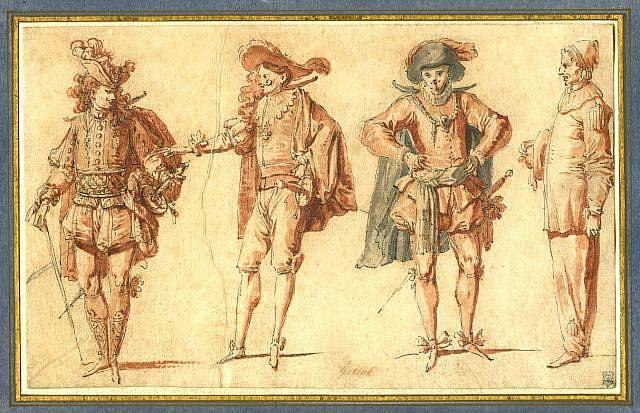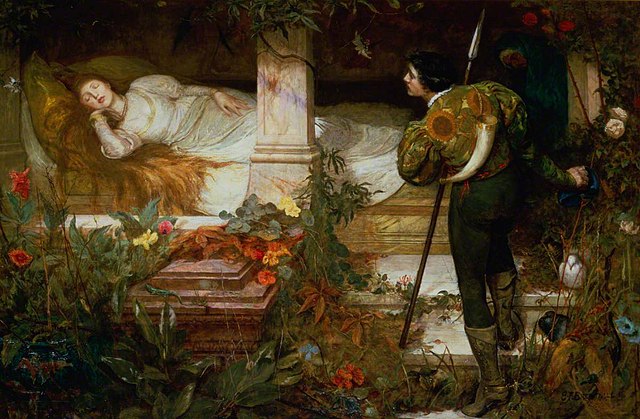A stock character, also known as a character archetype, is a type of character in a narrative whom audiences recognize across many narratives or as part of a storytelling tradition or convention. There is a wide range of stock characters, covering people of various ages, social classes and demeanors. They are archetypal characters distinguished by their simplification and flatness. As a result, they tend to be easy targets for parody and to be criticized as clichés. The presence of a particular array of stock characters is a key component of many genres, and they often help to identify a genre or subgenre. For example, a story with the stock characters of a knight-errant and a witch is probably a fairy tale or fantasy.
Stock characters play an important role in fiction, including in fairy tales, which use stock characters such as the damsel in distress and Prince Charming (pictured is Sleeping Beauty).
Hollywood
In fiction, a character is a person or other being in a narrative. The character may be entirely fictional or based on a real-life person, in which case the distinction of a "fictional" versus "real" character may be made. Derived from the Ancient Greek word χαρακτήρ, the English word dates from the Restoration, although it became widely used after its appearance in Tom Jones by Henry Fielding in 1749. From this, the sense of "a part played by an actor" developed. Character, particularly when enacted by an actor in the theater or cinema, involves "the illusion of being a human person". In literature, characters guide readers through their stories, helping them to understand plots and ponder themes. Since the end of the 18th century, the phrase "in character" has been used to describe an effective impersonation by an actor. Since the 19th century, the art of creating characters, as practiced by actors or writers, has been called characterization.

Four commedia dell'arte characters, whose costumes and demeanor indicate the stock character roles that they portray in this genre



